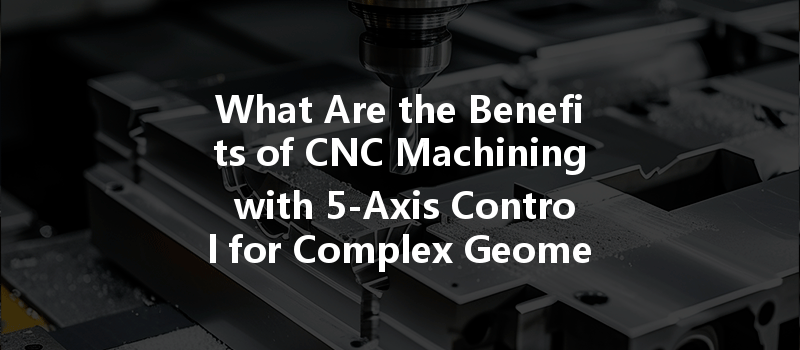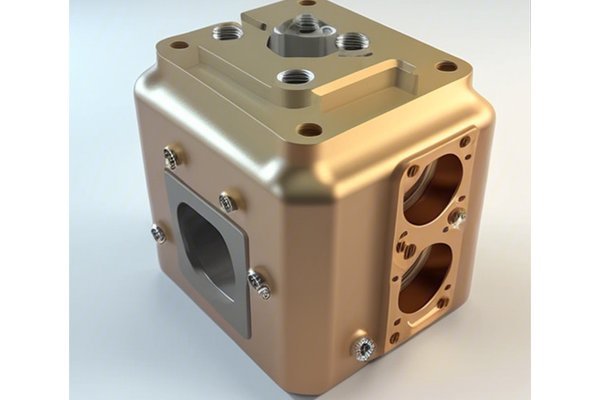Did you know that in today’s manufacturing landscape, a staggering 70% of engineers consider 5-axis CNC machining as a critical technology for producing high-precision components? This number underscores how vital this method has become in a world where efficiency, accuracy, and complexity are paramount. In an era where industries demand rapid prototyping and production of intricate parts, CNC machining with 5-axis control stands out as not just an option but a necessity for manufacturers.
In this blog, we’ll delve deep into the advantages of 5-axis CNC machining, explore its applications across various industries, and provide insights into why investing in this advanced technology is essential for meeting modern manufacturing demands.
—
Understanding 5-Axis CNC Machining
Before we explore the benefits, let’s understand what 5-axis CNC machining is. Unlike traditional 3-axis machining, where the cutting tool moves along three linear axes (X, Y, and Z), 5-axis machining adds two additional rotational axes (often designated as A and B). This allows the cutting tool to approach the workpiece from virtually any direction, significantly increasing the range of geometric complexities that can be achieved.
The Operational Mechanism of 5-Axis CNC Machining
In 5-axis CNC machines, the table holding the workpiece can rotate along the A and B axes, while the tool moves linearly across the X, Y, and Z axes. This sophisticated movement allows for concurrent cutting, meaning multiple sides of a part can be machined simultaneously, significantly reducing production times and increasing accuracy.
Advantages of 5-Axis CNC Machining
One of the predominant advantages of 5-axis CNC machining is the enhanced precision it offers. By enabling the tool to approach the workpiece from multiple angles without repositioning it, manufacturers can achieve tighter tolerances. This is particularly critical in industries such as aerospace and medical devices, where even a micrometer of deviation can lead to catastrophic failures.
Traditional CNC machining typically requires multiple setups to machine all sides of a complex component. In contrast, 5-axis machining streamlines this process by performing intricate cuts in a single setup. This not only decreases setup times but also reduces the likelihood of errors that may occur during repositioning. As a result, manufacturers can optimize their workflow, enhancing productivity.
With the ability to manipulate both the workpiece and the cutting tool, 5-axis CNC machining opens the door to previously unimaginable geometries. It allows the production of components with complex contours, deep cavities, and intricate details that would be almost impossible to achieve with less sophisticated machining methods. This makes it especially beneficial for industries that require bespoke parts tailored to specific needs.
5-axis machining contributes to higher-quality surface finishes. By keeping the tool engaged with the workpiece at optimal angles throughout the cutting process, manufacturers can minimize tool wear and avoid the common issues of surface irregularity. Higher quality surface finishes contribute to improved reliability and performance in finished products.
When machining components with complex geometries, efficient material removal is essential to maintaining production rates. 5-axis CNC machines excel at this by allowing the cutting tool to carve out material in a more efficient manner. This capability not only speeds up production times but can also reduce material waste, contributing to cost-effectiveness in manufacturing.
The versatility of 5-axis CNC machining cannot be understated. It can be used to work with various materials ranging from metals such as titanium and aluminum to plastics and composites. This level of adaptability makes it a valuable asset for businesses operating in multiple industries, from automotive to aerospace.
While the initial investment in 5-axis CNC machines may be higher than that of traditional machines, the overall cost-effectiveness in the long run cannot be ignored. The reduction in setup times, improved precision, and lower material waste lead to significant savings that outweigh the initial investments.
Applications of 5-Axis CNC Machining
5-axis CNC machining finds applications across a diverse range of industries. Here are a few notable examples:

Aerospace Industry
The aerospace sector is known for its stringent regulations and standards that require extreme precision and reliability. Components manufactured using 5-axis CNC machining can provide the accuracy needed for critical aerospace applications, such as turbine blades and engine housings.
Medical Devices
Implants and surgical instruments necessitate the utmost precision, as they directly impact patient outcomes. 5-axis machining enables manufacturers to create complex geometries needed for orthopedic implants or dental devices, ensuring higher reliability.
Automotive Industry
In the automotive industry, 5-axis CNC machining is employed for producing precision components such as engine blocks, transmission cases, and other intricate parts that require high levels of accuracy.
Consumer Products
The ability to create custom designs with complex shapes makes 5-axis machining ideal for producing components in consumer products, from smartphones to home appliances.
Implementing 5-Axis CNC Machining: Key Considerations
Transitioning to 5-axis CNC machining will require an investment in advanced machinery and training for your workforce. Machines must be specialized and capable of the complex dynamics involved, and operators must be skilled in programming and operating these machines.
CNC programming software plays a crucial role in optimizing machining processes. Invest in high-quality CAM (Computer-Aided Manufacturing) software that can efficiently handle 5-axis operations to achieve the best results.
Regular maintenance of your 5-axis CNC machines is vital to ensuring long-term performance and accuracy. Establish a maintenance schedule that includes preventive measures to avoid downtime and ensure consistent production levels.
Implement rigorous quality control processes to monitor the precision and accuracy of the components produced. Techniques such as CMM (Coordinate Measuring Machine) inspections can aid in maintaining high standards.
To sum up, CNC machining with 5-axis control offers a multitude of advantages that significantly enhance manufacturing capabilities. From improved precision and reduced setup times to the ability to create complex geometries and achieve superior surface finishes, the benefits are compelling for any manufacturer looking to stay competitive in today’s market.
In a world where the demand for high-quality, precise, and intricate components continues to rise, investing in 5-axis CNC machining is not merely a technological upgrade—it’s a strategic necessity.
Remember, the key to staying ahead in the industry lies not only in adopting new technologies but in leveraging them effectively. The landscape of manufacturing is evolving rapidly, and with 5-axis CNC machining, you can ensure your business is well-equipped to meet the challenges of tomorrow.
Embrace the transformation and unlock unparalleled potential with 5-axis CNC machining today. It’s worth thinking about for the future of your manufacturing operations!
Related Posts
- What are the main factors affecting the hourly cost of CNC machining and how can they impact your project budget?
- What is the Definition and Standard of RA 0.8 Surface Finish in Aluminum CNC Machining?
- How can CNC machining plants ensure that customers’ design requirements are met for prototype machining?






